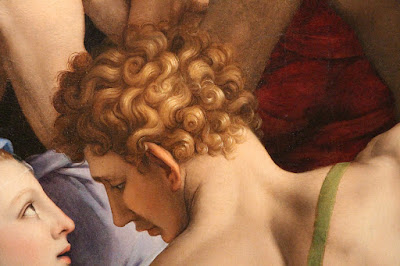 |
| Agnolo Bronzino The Deposition (detail) ca. 1543-45 oil on panel Musée des Beaux-Arts, Besançon |
 |
| Agnolo Bronzino The Deposition (detail) ca. 1543-45 oil on panel Musée des Beaux-Arts, Besançon |
 |
| Agnolo Bronzino The Deposition (detail) ca. 1543-45 oil on panel Musée des Beaux-Arts, Besançon |
 |
| Agnolo Bronzino The Deposition (detail) ca. 1543-45 oil on panel Musée des Beaux-Arts, Besançon |
 |
| Agnolo Bronzino Descent of Christ into Limbo (detail) 1552 oil on panel Basilica di Santa Croce, Florence |
 |
| Agnolo Bronzino Descent of Christ into Limbo (detail) 1552 oil on panel Basilica di Santa Croce, Florence |
 |
| Agnolo Bronzino Descent of Christ into Limbo (detail) 1552 oil on panel Basilica di Santa Croce, Florence |
 |
| Agnolo Bronzino Descent of Christ into Limbo (detail) 1552 oil on panel Basilica di Santa Croce, Florence |
 |
| Agnolo Bronzino Descent of Christ into Limbo (detail) 1552 oil on panel Basilica di Santa Croce, Florence |
 |
| Agnolo Bronzino Descent of Christ into Limbo (detail) 1552 oil on panel Basilica di Santa Croce, Florence |
 |
| Agnolo Bronzino Descent of Christ into Limbo (detail) 1552 oil on panel Basilica di Santa Croce, Florence |
 |
| Agnolo Bronzino Resurrection of Christ (detail) 1552 oil on panel Basilica della Santissima Annunziata, Florence |
 |
| Agnolo Bronzino Resurrection of Christ (detail) 1552 oil on panel Basilica della Santissima Annunziata, Florence |
 |
| Agnolo Bronzino Resurrection of Christ (detail) 1552 oil on panel Basilica della Santissima Annunziata, Florence |
 |
| Agnolo Bronzino Resurrection of Christ (detail) 1552 oil on panel Basilica della Santissima Annunziata, Florence |
"Italian Renaissance artists became anatomists by necessity, as they attempted to refine a more lifelike, sculptural portrayal of the human figure. Indeed, until about 1500-1510, their investigations surpassed much of the knowledge of anatomy that was taught at the universities. Opportunities for direct anatomical dissection were very restricted during the Renaissance. Giorgio Vasari's Lives of the Artists states that the great Florentine sculptor, painter, and printmaker Antonio Pollaiuolo (ca. 1432-1498) was the "first master to skin many human bodies in order to investigate the muscles and understand the nude in a more modern way." . . . The later innovators in the field, Leonard da Vinci (1452-1519) and Michelangelo (1475-1564), who are known to have undertaken detailed anatomical dissections at various points in their long careers, set a new standard in their portrayal of the human figure. The patrons commissioning art in this period also came to expect such anatomical mastery. . . . Circumstantial evidence suggests that a number of other artists also attempted direct dissections. The majority, however, limited their investigations to the surface of the body – the appearance of its musculature, tendons, and bones as observed through the skin – and recorded such findings in exquisitely detailed studies after the live nude model."
– from an essay by Carmen Bambach on the Heilbrunn Timeline of Art History at the Metropolitan Museum, New York